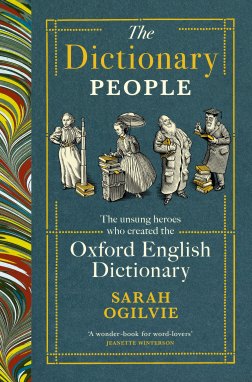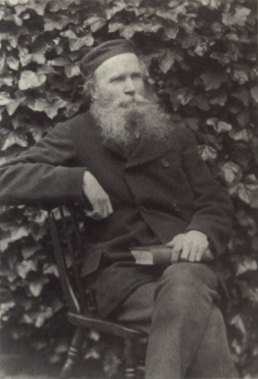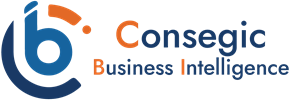The Jamaican language, popularly referred to as (Jamaican) Patwa, is a significant component of brand Jamaica. However, despite its high international visibility and mounting global interest, it is severely under-resourced in its homeland.
The language has benefitted from the work of outstanding linguists such as Beryl Loftman Bailey whose book Jamaican Creole Syntax (1966) was the first technical grammar of the language, and Frederic G. Cassidy and Robert B. Le Page’s Dictionary of Jamaican English (DJE), which was the first scholarly dictionary prepared. While these works have enjoyed much attention in academia, they are not as known as they should be by ordinary Jamaicans, and they are consulted even less.
Admittedly, on the market are numerous phrase books, glossaries, and dictionaries prepared by laypeople, but these tend to suffer from one or more of the following issues: incorrect part of speech identification; mismatch between the part of speech, the definition, and the example sentence; and incomplete information, forcing Jamaican into English structure. One exception is Eric Rosenfeld’s comprehensive Jamaicasaurus, However, like all of the others (including the scholarly works), it only describes those areas in which Jamaican is different from Standard English. Unfortunately, this common approach of only treating the differences ends up making our vibrant language look malnourished.
FILL THE GAP
To fill the gap, work began in earnest this month on the Dictionary of the Jamaican Language (DJL). The DJL will be a bilingual, unidirectional dictionary; bilingual because the headwords are in Jamaican and the definitions in English; unidirectional because there is no reverse section where the headwords are in English and the definitions are given in Jamaican. The latter will be done at a later stage. The main plan is for the dictionary to be web-based but we may contemplate a print version based on demand. The DJL is coming at an opportune time when there is an urgent need for general-purpose dictionaries and learners’ grammars to support the aims of the National Standards Curriculum, as well as the teaching and learning of Jamaican as a second/foreign language.
Scholarly dictionaries such as the DJE and Richard Allsopp’s Dictionary of Caribbean English Usage (DCEU) attempt to treat both Jamaican and Jamaican English between the same two covers. Additionally, they are intended as supplements to dictionaries such as Webster’s Third New International Dictionary and the Oxford English Dictionary, which cover metropolitan varieties of English. In keeping with their supplemental nature, they mostly list ‘Jamaicanisms’, i.e. words and senses that were considered unique to Jamaica. For example, the only sense the DJE lists for Jamaican sik (sick) is “to sicken, to make sick”, reflecting its use as a transitive verb; because, at that time, that was the only meaning different from standard English. However, Jamaicans also use the word sik as an adjective, e.g. di sik man, and as a stative verb, e.g. di biebi did sik. The latter usage is one way in which the Jamaican word is different from its English source; a feature which Jamaican shares with several West African languages where words denoting properties and states tend to be verbs. The DJL will reflect this aspect of the language rather than trying to force Jamaican into the structures of English and Latin.
The DJL will focus on contemporary usage but, since it aims to be a full record of the Jamaican language, it will include words and senses that have been used throughout the history of the language. Because of the contemporary focus, the order of senses will not necessarily reflect their historical development. Current senses will be listed before older, more dated, ones. Since the speakers of the Jamaican language are in full preparation mode for the back-to-school season, we decided to announce the start of our work on the dictionary by presenting to the nation a little over 30 of the entries to be included in the DJL which are related to school life.
STRUCTURE OF DJL ENTRIES
The headword will be followed by the part of speech. Although we have abbreviated the part of speech below because of space constraints, in the actual dictionary, the part of speech will be spelt out. The part of speech is usually followed by the sense or senses associated with that specific part of speech. Where a word has multiple senses, those senses are numbered consecutively. In cases where additional information about the use of the word/sense may be useful, this is written in small capitals and placed before the relevant sense. Some of these usage labels include “dated”, for words that are old-fashioned (mostly used by grandparents), “offensive” (likely to offend, degrade, upset), “dormant” (no longer in use), and “historical” (still used but only when talking about the past). Each sense is followed by a made-up example sentence which helps to illustrate how the word is used. In the web-based dictionary, each headword will be accompanied by at least one audio file which contains the pronunciation of the word.
Since the DJL is meant to contribute to the standardisation of the language, headwords will be written using the Cassidy-JLU Writing System (CJLU), which is an easy-to-learn phonemic system that was developed by Jamaica-born linguist Frederic Cassidy and amended by the Jamaican Language Unit (JLU). The beauty of this system is that, even if you are seeing or hearing a word for the first time, it doesn’t take long to work out its spelling or pronunciation.
The DJL editorial team comprises a chief editor, Joseph Farquharson; assistant editor, Tajay Henry, and three subeditors, Tali Thorney, Carson Thomas and Donikue Campbell. The initial phase of the DJL is planned to last between 2023 and 2025. This phase is made possible by financial support from the CHASE Fund.
DJL ENTRIES
Abbreviations: intr., intransitive; n., noun; phr., phrase; stat., stative; tr., transitive; v. verb
baal-ed-i-tiicha n. OFFENSIVE. a term of address used by children to taunt a boy sporting a bald head. Baal-ed-i-tiicha, wiet til skuul uova.
baks lonch n. cooked food served for lunch in a disposable rectangular or square container. Bai di taim mi riich a kyantiin, baks lonch don.
bak-tu-skuul n. the period just before the beginning of the school year that is used to make preparations. Dongtoun ful op chruu a bak-tu-skuul ya nou.
big skuul n. (for basic and primary-school students) any education level above the one they are at.
Kim api se shi a go big skuul Septemba a kom.
boblz n. a hair accessory for girls comprising an elastic cord with a small ball at each end. Mi lov wen mi mada plat op mi ier an put iin di priti boblz dem.
brait spaaks n. a person who is quick-witted; but, more commonly, someone who is good at book learning. = SPAAKS. Mi no shak se shi paas ar egzam kaa mi nuo se shi a brait spaaks.
brieks n. 1. = BRIEKS TAIM. 2. any snack that is (intended to be) eaten during the short scheduled break during school hours. Mi figat mi brieks pan i dainin tiebl dis maanin.
brieks taim n. a short scheduled break during the schoolday which allows students to refresh themselves. = BRIEKS. Notn no iina yu lonch pan fi brieks taim so yu afi bai sitn a tok shap.
dons bat n. OFFENSIVE. a person who is slow at book learning. Im neva du im uomwork gud. Im a dons bat.
eksasaiz buk n. 1. a ruled book with either a soft or a hard cover (measuring roughly 4.9 x 6.9 in.), primarily used for writing in schools. Dem nowadiez eksasaiz buk no iizi fi mash op. 2. DATED. a ruled book with a soft cover that is primarily used for writing in schools. Mi eksasaiz buk ful op a mats.
fos braitis n. (in schools where students are streamed based on performance) the class at each grade level with the top-performing students. Mi mash op di egzam so mi a-go ina fos braitis neks ier.
freshaz n. a new student at a college or university, especially during the orientation period. Di freshaz dem a kom iin orli fi kalek dem pakij.
grob n. a new student who is bullied by older students to perform menial or degrading tasks.
Luk ou lang wi sen di grob fi go bai pati an im kyaahn kom bak yet. v. tr. to bully a new student by forcing them to perform menial or degrading tasks. Di fos wiik mi de a ai skuul di biga bwai dem grob mi.
guomin taim n. = GUOMIN UOM TAIM.
guomin uom taim n. the scheduled time one departs for home at the end of a day-long activity such as school or work. = GUOMIN TAIM. Di bel jos ring so dat miin se a guomin uom taim nou.
jain op phr. v. tr. 1. to link or connect two or more things. Dem jain op di buod dem an mek wahn siit. 2. to work together; co-operate; collaborate. Di tuu a dem jain op fi pie di bil. phr. v. stat. be linked or connected. Di tuu piis a waya dem jain op. phr. v. intr. to become a member of a group or organisation. Dem a plan paadna agen bot dis taim mi naa jain op. n. a style of handwriting in which the letters of a word are joined to each other: cursive. = JAININ OP. Sins mi staat taip mi kyaahn rait ina jain op agen.
jainin op n. = JAIN OP n.
kalijaz n. a student who attends a teachers’ college or community college. Di kalijaz dem ful op di kuk shap.
kapi skecha n. a student who copies from the work of others. = kapi teka. Mi a chrai tel tiicha se Jan a kapi skecha.
kapi teka n. = KAPI SKECHA.
kraab tuo = KRAB TUO.
krab tuo n. poor handwriting. Da kraab tuo ya aad fi riid.
lainz n. a sentence or passage that is copied multiple times by hand as a form of punishment in school. Mi kech a skuul liet so di klaas priifek gi mi lainz fi du.
push paint n. 1. a type of pencil with an internal chamber that holds the graphite stick. The stick comes out by squeezing or twisting a part of the pencil. Di push paint we mi a yuuz ron outa led. 2. a wood-cased pencil with a loose graphite stick that can be pushed through the wood casing from either end. It aad fi rait wid push paint.
rang bang n. an X mark used by a teacher grading student work to indicate an incorrect answer. Mi a-go stodi aad fi Mats kaa mi no waahn get no rang bang.
red ingk n. 1. ink that is red in colour. Di red ingk kech mi kluoz. 2. a pen that has red ink. Beg yu wahn red ingk mek mi maak dem piepa ya.
skuulaz n. a student who attends school, especially up to the secondary level. Di ruobot taksi dem no waahn kyar no skuulaz.
spaaks n. = BRAIT SPAAKS.
stiki n. a check mark used by a teacher to indicate that a student’s work is correct or has been checked. = uk stik. Luk umoch stiki mi get ina mi buk.
taim tiebl n. = TAIMZ TIEBL.
taimz tiebl n. a list containing multiples of a series of numbers, used by students as a study aid. = TAIM TIEBL. Tiich se wi fi nuo wi taimz tiebl.
tiich n. an affectionate term of address for a teacher. Tiich, mi jos waahn fi tangk yu fi tek kier a Jahnoi.
uk stik n. 1. a check mark used by a teacher to indicate that a student’s work is correct or has been checked. Johnny get nof uk stik ina im buk. 2. a long stick with a crook or a v-shaped hook at one end used for hoisting or lowering things. Di uk stik kudn riich di manggo dem pan di tap lim. 3. a sturdy stick roughly 2 ½ ft in length (cut from a tree in such a way so there is a short hook at one end), used while clearing land or weeding with a machete. Di faama dem yuuz dem uk stik wen dem a bush di plies so di mashiet no chap dem.
wash out phr. v. tr. 1. use water or other types of liquid to remove unwanted material from something. Mi tuu tayad fi wash out di tuu likl piis a kluoz. 2. (of an event) to cancel because of rain. Di fans dem beks kaa rien wash out di mach. 3. to have an abortion. Im gi mi sitn fi jringk fi wash out di biebi. phr. v. intr. (of a place that is normally dry) covered by a lot of water; flooded. Mi faada grong wash out an im luuz evriting. n. the process of using a substance to stimulate the evacuation of the bowels. Wen alidie don wi afi tek wash out.
Email carilingjm@gmail.com for further information and how to support the work of DJL.
Adblock test (Why?)






/cdn.vox-cdn.com/uploads/chorus_image/image/72611838/C0FBB206_C06C_4ED6_B991_9BC4D456AE17.0.jpg)


/cloudfront-eu-central-1.images.arcpublishing.com/prisa/XNLUGO45VZAQLHJQR4XDRSX64Y.jpg)